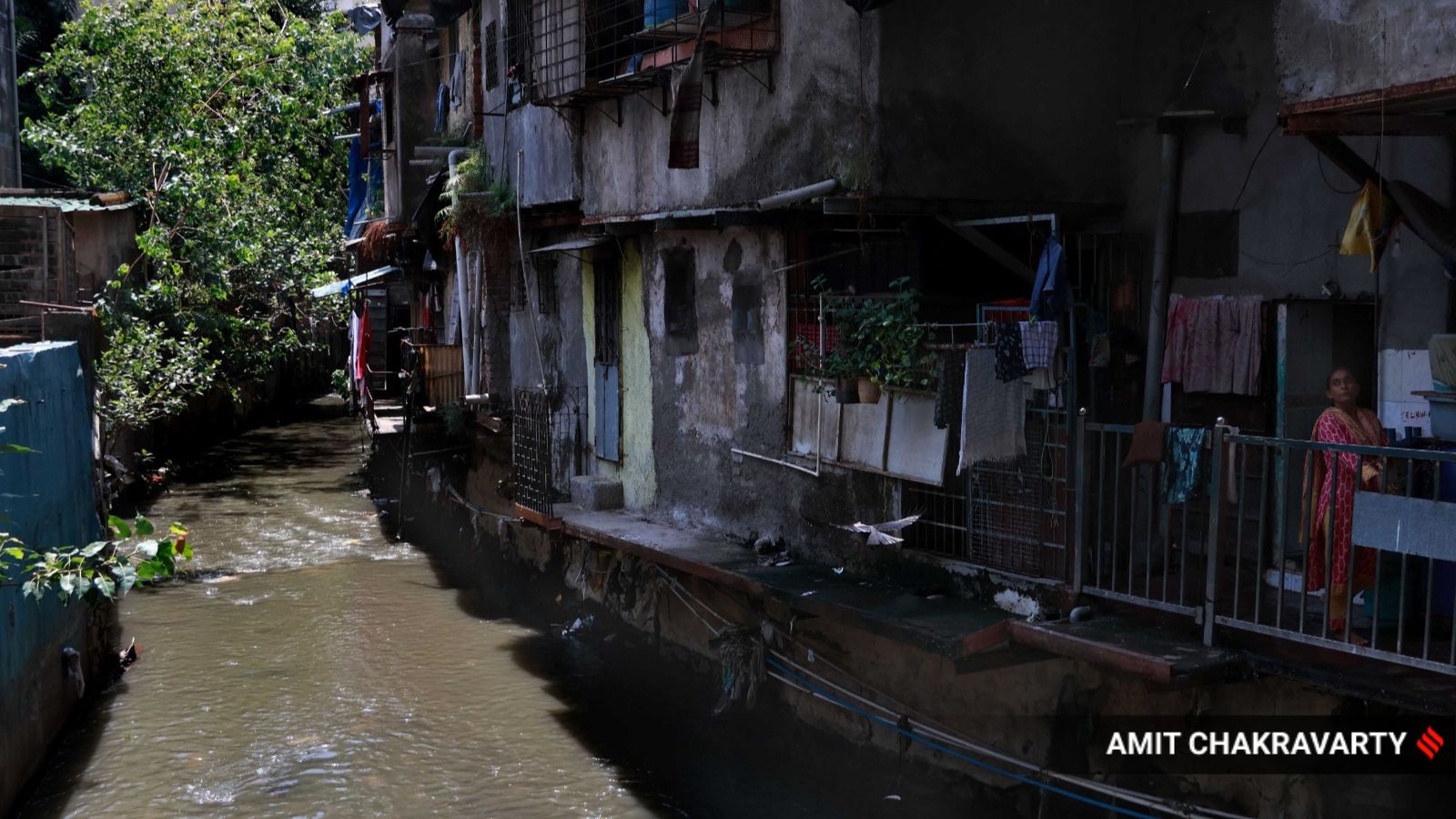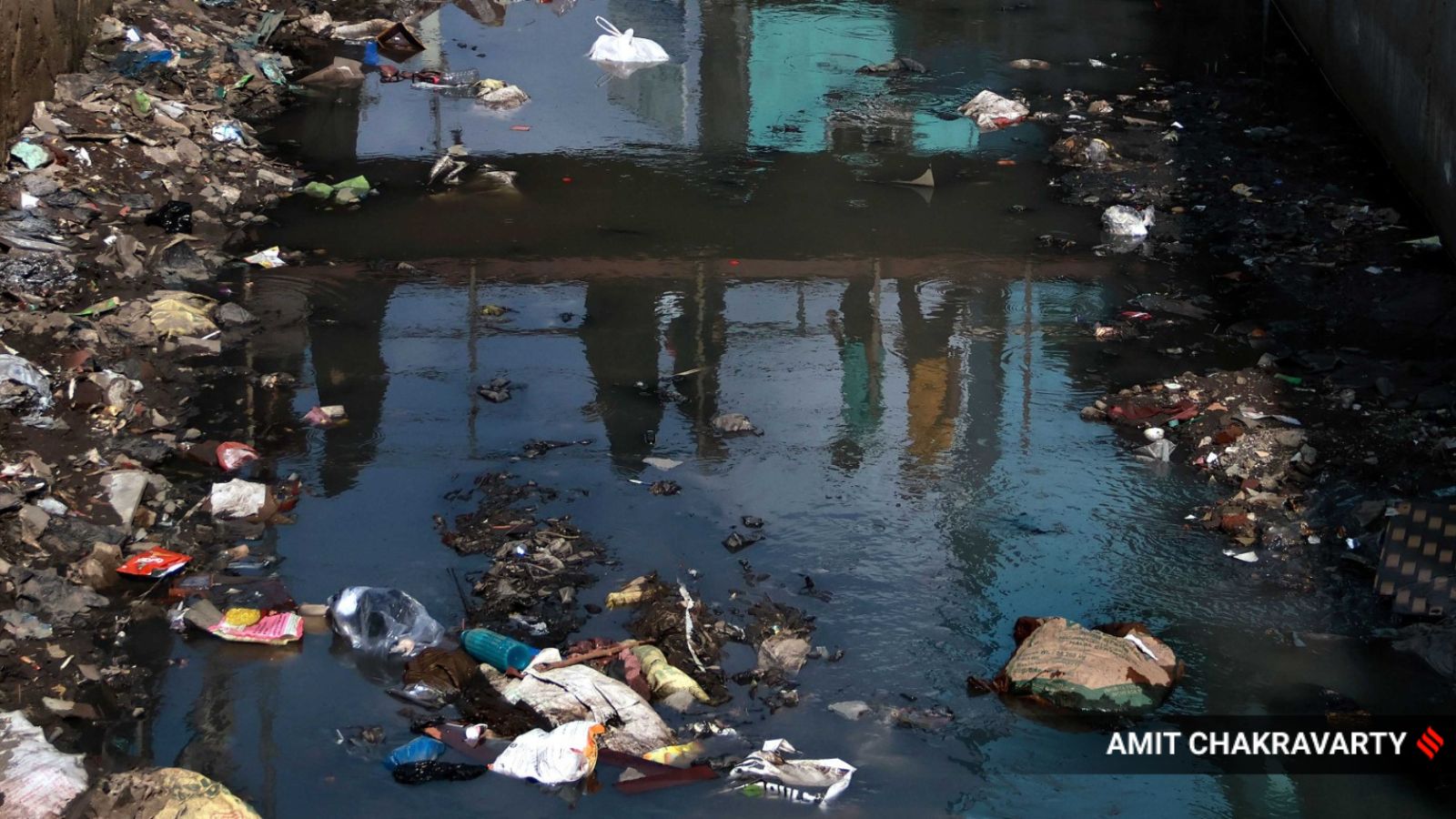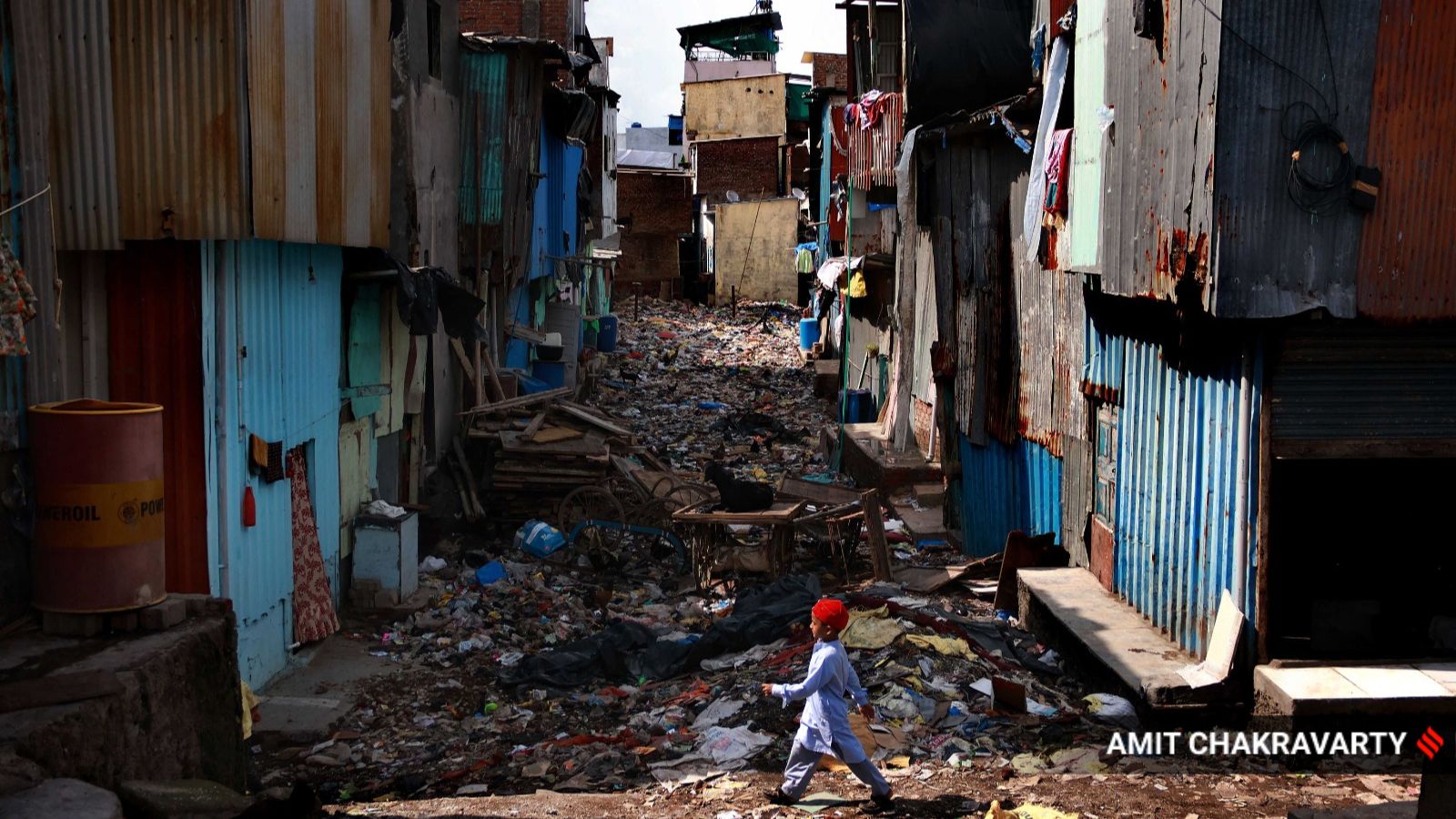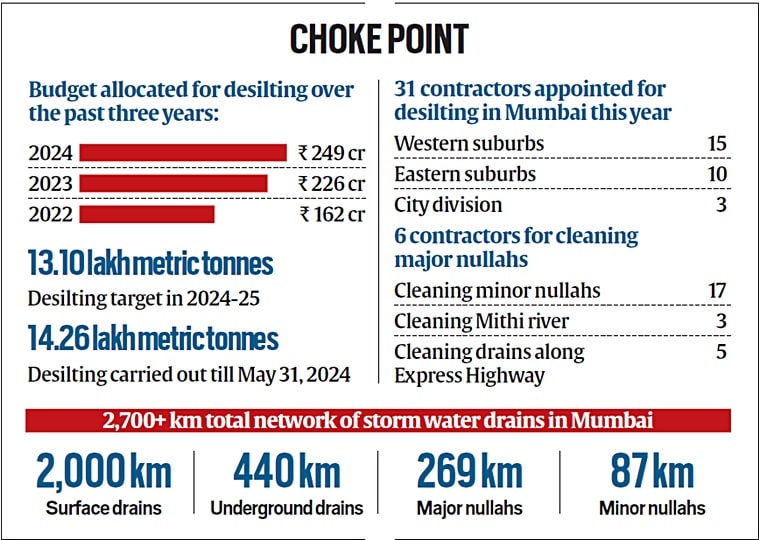Mumbai braces for water-logging, clogged drains despite BMC’s year-round desilting
The BMC claims of exceeding its pre-monsoon desilting target this year. However, in light of the Lok Sabha elections, which roped in civic workers, and IMD forecasting an above-average monsoon this season, urban planners and residents worry that the water-logging problem could be worse this time
 The Brihanmumbai Municipal Corporation (BMC) carries out desilting of minor and major nullahs alongside Mithi river annually and this year, the civic body allocated Rs 249 crore for the same. (Express photo by Amit Chakravarty)
The Brihanmumbai Municipal Corporation (BMC) carries out desilting of minor and major nullahs alongside Mithi river annually and this year, the civic body allocated Rs 249 crore for the same. (Express photo by Amit Chakravarty)When heavy rains swept Mumbai on June 9 heralding the onset of monsoon, several pockets of the city witnessed water-logging, slowing down life in the fast-paced megapolis. To Mumbaikars, this was not unusual as the city is infamous for its flooding woes, each time heavy rain lashes the district. The Brihanmumbai Municipal Corporation (BMC) carries out desilting of minor and major nullahs alongside Mithi river annually and this year, the civic body allocated Rs 249 crore for the same. However, despite the BMC’s claims of exceeding its pre-monsoon desilting target, the city witnesses water-logging owing to choking drains, year after year.
In light of the Lok Sabha elections, which roped in civic workers and hampered several essential works, city residents complained that pre-monsoon preparedness, including desilting works, took a hit and with the India Meteorological Department (IMD) forecasting an above-average monsoon this season, urban planners and residents worry that this year, the city is in for a prolonged period of water-logging.
 This year, on the very first day of monsoon, Andheri subway was shut for traffic for nearly three hours. SV Road, Veera Desai Road and Amboli are among other pockets which experience water-logging. (Express photo by Amit Chakravarty)
This year, on the very first day of monsoon, Andheri subway was shut for traffic for nearly three hours. SV Road, Veera Desai Road and Amboli are among other pockets which experience water-logging. (Express photo by Amit Chakravarty)
Mumbai’s drains & desilting
Spanning over 2,700 km, Mumbai is home to a labyrinthine network of storm water drains (SWDs) encompassing 2,000 km of surface drains, 440 km of British era underground drains, 269 km of major nullahs and 87 km of minor nullahs.
While the underground drains run beneath the island city, the suburbs, where the SWD network developed much later, largely has surface-level open drains. Resembling canals, these open drains run through the suburban pockets before discharging into the Arabian Sea through creeks.
Alongside the silt (soil) from the water which gets deposited naturally in all waterbeds, a large amount of solid waste — from settlements along the drains — also gets accumulated in the city nullahs. When these drains are not desilted and cleared, this amalgam of silt and filth choke and clog the drains. This in turn affects the flow of the water leading to overflow of the drain water into streets during heavy rains.
Therein, emerges the conundrum of water-logging during monsoon.
Seeking to improve the carrying capacity of water and the flow in these channels, the BMC undertakes desilting — a process involving removal of silt or sediment lodged in the bed of waterbodies — round the year.
The process of desilting had been recommended by the fact-finding committee led by Madhav Chitale, which had been set up in the aftermath of the July 26, 2005 deluge, which left the city inundated in its wake and claimed over 500 lives.
 Even as a deadline of June 5 was finalised by the top brass to complete pre-monsoon nullah cleaning work, the civic body claimed to have achieved more than 100 per cent of its pre-monsoon target by the last week of May. (Express photo by Amit Chakravarty)
Even as a deadline of June 5 was finalised by the top brass to complete pre-monsoon nullah cleaning work, the civic body claimed to have achieved more than 100 per cent of its pre-monsoon target by the last week of May. (Express photo by Amit Chakravarty)
Each year, the BMC allocates a whopping amount to carry out its desilting mission. With Rs 249 crore allocated this year, the civic body has appointed 31 agencies to undertake desilting in all the major and minor nullahs in Mumbai, the drains adjoining the two expressways and the Mithi river between April 2024 and March 2025.
For this year, the civic body has set a target of removing 13.1 crore Metric Tonnes (MT) of silt, a figure which is determined on the basis of data of silt removed over the past 4-5 years.
Even as a deadline of June 5 was finalised by the top brass to complete pre-monsoon nullah cleaning work, the civic body claimed to have achieved more than 100 per cent of its pre-monsoon target by the last week of May. According to officials, by May 31, the civic body had completed 126 per cent of its desilting target for minor nullahs, followed by 110 per cent in major nullahs and 106 per cent in Mithi river.
A visit by The Indian Express across several drains in the suburbs and the city, however, showed them choked with solid waste and floating silt.
 For the record, more than 10,000 BMC officials were roped in for election duty this year, affecting several public works. (Express photo by Amit Chakravarty)
For the record, more than 10,000 BMC officials were roped in for election duty this year, affecting several public works. (Express photo by Amit Chakravarty)
From slum pockets to highest-paying wards: Choking drains, water-logged lanes
Running through the densely populated pockets of eastern suburbs, the Adarsh Nagar nullah in Govandi — known colloquially as ‘Matti’ — is a hotbed of all kinds of solid waste, ranging from polythene bags, clothes, bottles, cardboard, furniture etc. The drain lies in the backyard of the Deonar dumping ground, beneath which it passes, before emptying into the Vashi creek.
Both sides of the drains are lined by matchbox-like hutments, each separated by corrugated aluminum sheets and united by the woes of living alongside the squalor. In the absence of adequate dustbins, residents were seen flinging waste directly in the drains, further choking them.
Pointing to a restive Poclain machine, parked close to the drain, Shehnaaz Farooq Shaikh, who has been living in the locality since her childhood, says, “Ahead of monsoon, only once in a year, the BMC sends people here to clean this drain. Then within days, the drain becomes loaded with waste all over again. But what’s the point of cleaning this gigantic drain just once?”
“Since the drain is anyway filled with waste, when it rains, the rainwater falls into the drain resulting in the excess water as well as the solid waste overflowing on the roads. Owing to the water-logging, it becomes very difficult to even step out of our homes during heavy rains,” added Shaikh, squatting a swarm of mosquitoes, which are much too common in the garbage-laden area.
 Speaking about clogged drains across other locations of the city, Anil Gaglani, Kurla resident and activist, said, “In several areas like Kurla, Ghatkopar and even Sakinaka, it has been observed that the desilting and cleaning have not been done adequately.
Speaking about clogged drains across other locations of the city, Anil Gaglani, Kurla resident and activist, said, “In several areas like Kurla, Ghatkopar and even Sakinaka, it has been observed that the desilting and cleaning have not been done adequately.
Faiyaz Alam Shaikh, a Govandi resident, told The Indian Express, “With encroachment lining the walls of the drain, in several hutments the sewage outflow from the toilets discharges directly into the nullah. Since the drain is not covered, there have even been several incidents, including deaths of children who fall into them. Over the years, the encroachment has only kept on increasing, thereby reducing the drain’s width.”
While Govandi houses some of the poorest and the most marginalised communities of the city, the incomplete desilting works in drains can also be seen in the more affluent localities.
A case in point is Mogra nullah which flows predominantly through K/East (Andheri East) and K/West (Andheri West) — among the highest tax-paying wards of Mumbai — before emptying into the Versova creek. Despite paying the highest property taxes in the city, the areas witness water-logging every time rain sweeps the city, thanks to the overflow from Mogra nullah.
While the Mogra nullah is quite wide where it originates in Andheri East, as it traverses through various pockets of the ward, the width of the drain keeps reducing considerably, owing to encroachments as well as unchecked development along both sides of the drain.
Dhaval Shah, co-founder of Lokhandwala Oshiwara Citizen’s Association (LOCA) and a local resident, said, “As the width of the drain narrows, its carrying capacity reduces leading to coagulation of garbage. Owing to this, the water flow is impacted resulting in a backlog of water and overflow. In low lying areas like the Andheri subway, the water-logging leads to closure even during small quantities of rain.”
Furthermore, while earlier the nullah had linear flow, now it bends at several locations, reducing the speed of the water with every curvature. Together, these factors deal a blow to the flow of the water in the drain, resulting in water-logging.
This year, on the very first day of monsoon, Andheri subway was shut for traffic for nearly three hours. SV Road, Veera Desai Road and Amboli are among other pockets which experience water-logging.
When The Indian Express visited several points of the drain, it was observed that despite desilting, the drain remained unclean beneath the culverts with floating garbage observed in several locations.
“The civic body must carry out widening and deepening of the drains to improve the flow. It is also pertinent to remove the illegal structures along the drains which have encroached along the floodplains and caused the narrowing of the drain in the first place,” added Shah.
Speaking about clogged drains across other locations of the city, Anil Gaglani, Kurla resident and activist, said, “In several areas like Kurla, Ghatkopar and even Sakinaka, it has been observed that the desilting and cleaning have not been done adequately. The desilting work should clean up to 3-4 ft deep below the drain. However, most cleaning has been done superficially with the hidden areas of the drains remaining clogged. At Safed Pool nallah, for example, one can see that the silt has not been cleared until the bottom.”
Following elections, a worry: People question monsoon preparedness, desilting targets
Several residents and experts have expressed concern over higher chances of water-logging this year, owing to the incomplete desilting works in light of the LS polls. For the record, more than 10,000 BMC officials were roped in for election duty this year, affecting several public works.
Besides, the IMD has forecast an above-average rainfall this year across the country including in Mumbai. While Mumbai receives an average of 2,300 mm rain throughout the four months of the monsoon, this year IMD Mumbai scientists have indicated more rainfall than the average.
Vivek Pai, city-based urban planner, said, “Mumbai is definitely going to witness severe water-logging this year. Owing to the elections, amongst other reasons, the desilting works have been impacted. Our monsoon preparedness has not been up to the mark and thus, citizens can face a lot of mess this season.”
Govandi resident Faiyaz also pointed out that with the desilting works in their locality initiated late, residents of the area are worried about major water-logging this time. “We are worried that a large number of roads will be waterlogged in the locality this monsoon, as there has been negligence on part of the BMC in light of the elections this year. Locals have echoed that the desilting works started very late this time. If it rains heavily, there is a high certainty that this season, we are going to witness choking and overflow of drains,” said Faiyaz.
What officials say on desilting challenges
According to senior BMC officials, despite desilting, the drains get choked primarily due to recurring floating waste dumped into the drains, which results in water-logging.
Emphasising on the difference between silt and floating waste, Abhijit Bangar, Additional Municipal Commissioner (Projects), said unlike the natural phenomenon of silt deposition which depends on the tidal movements, floating solid waste is dumped externally, making it a bigger and recurring challenge.
Bangar said, “Siltation is a natural phenomenon while floating solid waste is dumped externally into the storm water drains. It is a bigger menace because the plastic and other waste material, when stuck at a culvert, is more responsible for water-logging. Furthermore, floating waste is recurring. Even after cleaning the silt and floating waste, we find that the drains get filled with garbage over the next few days because people keep dumping into the nallahs.”
 Meanwhile, another civic official added that despite removal of silt beyond the set target, several bottlenecks like culverts get overlooked owing to reasons like negligence by the contractor and inability of Poclain machines to enter the pockets.
Meanwhile, another civic official added that despite removal of silt beyond the set target, several bottlenecks like culverts get overlooked owing to reasons like negligence by the contractor and inability of Poclain machines to enter the pockets.
To tackle the problem, the civic body is exploring several options ranging from installation of nets to implementation of box drains. “We are exploring the option of installing nets along the drains as that will curb the garbage dumped by people from entering the nallahs. There are several challenges such as robbery of nets that have to be kept in mind while finalising the option. Besides, we will have to determine the nature of the net depending on the nature and structure of the slums and areas where we want to install the net,” said Bangar, adding that the civic body will explore the plan in some areas initially.
He added, “Furthermore, we are also implementing box drains in several locations because cleaning becomes easier with such types of drains. In order to prevent the problem of the waste itself, meanwhile, we have to also make waste collection systems more robust.”
Meanwhile, another civic official added that despite removal of silt beyond the set target, several bottlenecks like culverts get overlooked owing to reasons like negligence by the contractor and inability of Poclain machines to enter the pockets. “These overlooked pockets, even if small, can pose serious problems leading to overflow. Therefore, we need to introduce more stringent supervision.”
This year, in April, the civic body — on the basis of inspection reports — levied a total penalty of Rs 30.83 lakh on all the 31 private contractors who are involved with the pre-monsoon desilting works in Mumbai. The fines had been imposed for failing to undertake proper cleaning of drains.
On the question of exceeding the 100 percent desilting targets, the official maintained, “It is important to understand that when we say desilting is 100 percent complete, it doesn’t mean that desilting is entirely concluded. The target that we set is a benchmark against which we check the quantum of waste removed and whether we are heading in the right direction.”
Going forward: Is desilting enough?
Even as the civic body engages in its year-long desilting drive, urban planners have pointed to a need for better drainage infrastructure and fundamental changes to prevent choking of drains.
Urban planner Vivek Pai said, “No city in the world can depend solely on storm water drains. Network augmentation of drains is the need of the hour. The city needs more storm water drains, alongside sewage networks and other surface drains, especially in the low lying areas such as Parel, Santacruz, Kalina etc, which are more prone to water-logging. Besides dredging of rivers including Mithi, Oshiwara, Poisar etc is the need of the hour.
“Over the rapid concretisation in the past few years, the open spaces have reduced which also means that the city has very less permeable spaces. This prevents the rainwater from seeping through the ground surface leading to faster accumulation. Mumbai should revive its open spaces to prevent such water-logging,” he added.
Residents also echoed the need for better civic sense to ensure that no waste is dumped into the drains in the first place.
Vidya Vaidya, Bandra resident and chairman of BRAVO said, “As long as citizens keep dumping waste into the drains, the waste is going to overflow onto the streets. When we conducted audits of drains, we would find objects from plastic bags to even huge mattresses dumped inside the drain. In some places, the storm water drains also don’t have grills which further leads to waste overflow. The first step to tackle the problem is that the citizens must stop throwing any type of garbage in the nullahs.”
Amidst the civic body exploring the option of netting along drains, Vaidya said that the civic body must also consider installing netting at the outlet of the drains. “Several countries have adopted this technique which prevents the waste from discharging into the sea. The nets are big enough for aquatic species like fish to pass through yet prevents the waste from being dumped into the waters,” added Vaidya.

Stakeholders speak
“Mumbai is definitely going to witness severe water-logging this year. Owing to the elections, amongst other reasons, the desilting works have been impacted. Our monsoon preparedness has not been up to the mark and thus, citizens can face a lot of mess this season” — Vivek Pai, city-based urban planner
“Siltation is a natural phenomenon while floating solid waste is dumped externally into the storm water drains. It is a bigger menace because the plastic and other waste material, when stuck at a culvert, is more responsible for water-logging” — Abhijit Bangar, Additional Municipal Commissioner (Projects)
“As the width of the drain narrows, its carrying capacity reduces leading to coagulation of garbage. Owing to this, the water flow is impacted resulting in a backlog of water and overflow. In low lying areas like the Andheri subway, the water-logging leads to closure even during small quantities of rain” — Dhaval Shah, co-founder of Lokhandwala Oshiwara Citizen’s Association.







